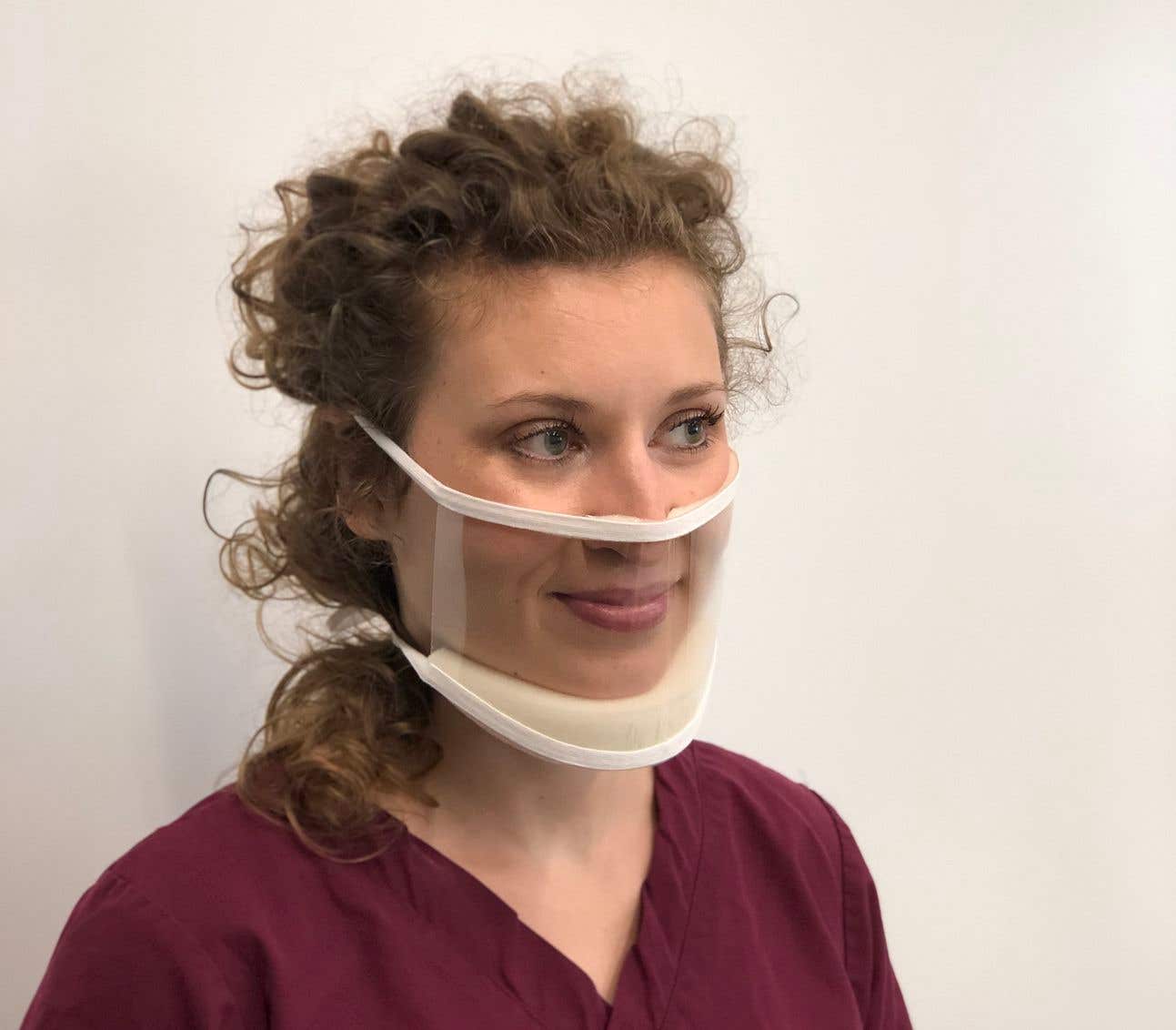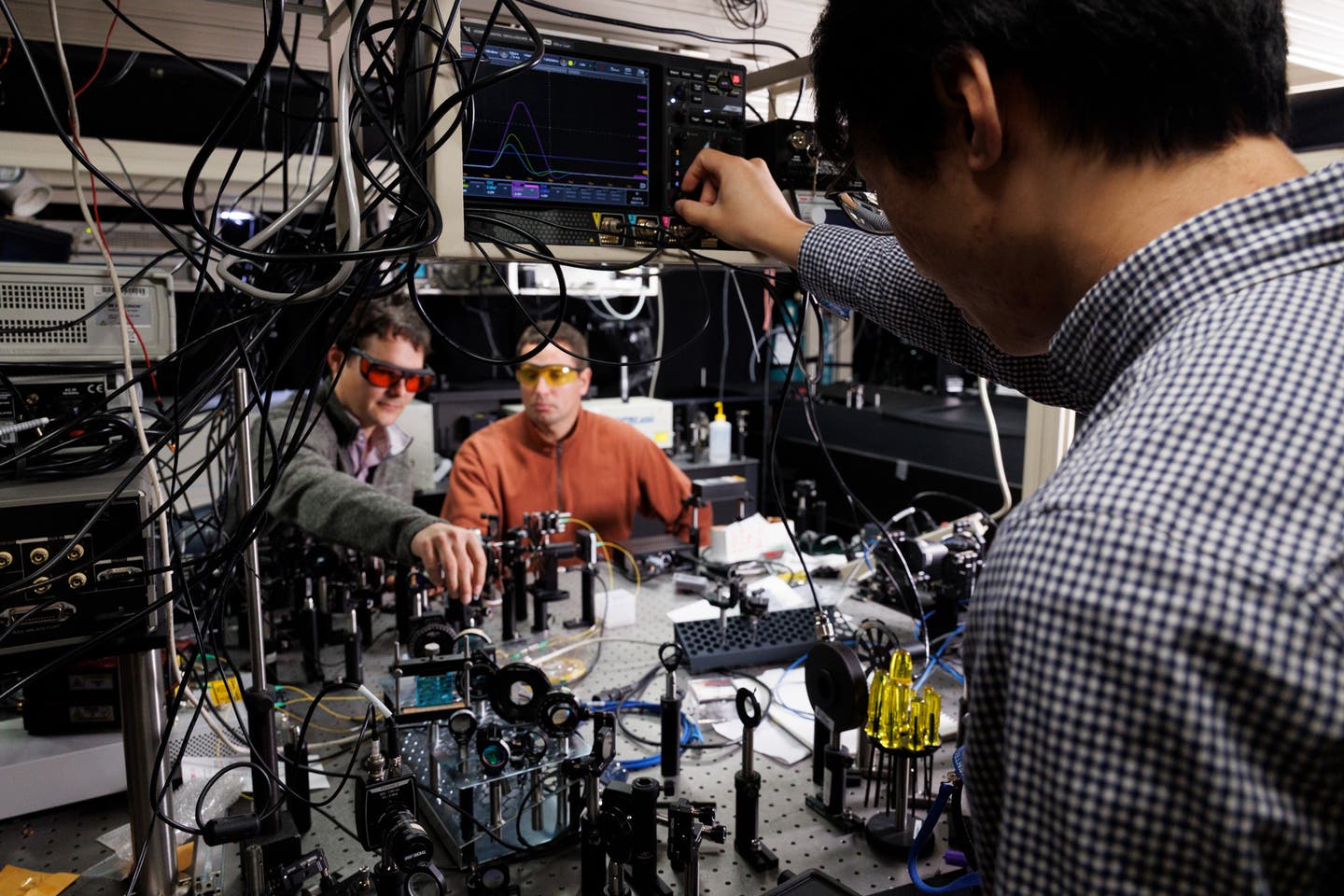Clear masks help the hard of hearing, but they could benefit everybody
She couldn’t understand their words or give them answers. Dittmar is deaf and relies on lip reading, sign language, and other visual cues to

[Aug. 5, 2020: PopSci]
Founded in 2017, ClearMask makes transparent surgical masks that are FDA approved. Now it's turning its attention to pandemic equipment as well.
Allysa Dittmar still remembers the day clearly. While undergoing a hospital procedure in 2017, the doctors, suited up in their surgical gowns and masks, asked her a number of pre-op questions. But she couldn’t understand their words or give them answers. Dittmar is deaf and relies on lip reading, sign language, and other visual cues to communicate. The interpreter for the hospital never showed up due to a clerical error. Eventually, the medical staff just stopped trying to talk to her, and instead moved her body around for her as if she were a doll. It was dehumanizing and disorienting, she recalls.
Dittmar’s experience might ring familiar to others. Close to 15 percent of the adult US population reports some difficulty hearing—an issue that’s gotten little attention as mask wearing becomes the necessary new norm. With nose and mouth coverings, individuals who are deaf, hard of hearing, or speak foreign languages will have a harder time relying on lip movements and facial expressions to understand the discourse around them. Dittmar’s story shows that this issue predates COVID-19—but the pandemic has brought it to scale, while adding the challenge of managing infection.
“Not being able to see facial expressions with masks has always been a problem for the deaf and hard of hearing,” says Aaron Hsu, the CEO of ClearMask. He and Dittmar, whose background is in public health and policy, co-founded the company three years ago to design one of the first transparent surgical masks with full face visibility. “It took a pandemic for people to realize consciously and explicitly that seeing someone’s face is so important,” he adds.
It’s an issue of universal design, says Bernard Hurwitz, an administrator at the National Technical Institute for the Deaf (NTID) at the Rochester Institute of Technology. Universal design, he explains, is the idea that all products and systems can be adjusted regardless of the user’s age, disabilities, or other features. For example, the textured floor tiles in subway stations alert people with limited vision when they’re getting close to the edge of the platform—but even people with full sight benefit from knowing what that safe and acceptable distance is.
Like these kind of stories? Get The Brighter Side of News' newsletter.
When the world started wearing masks, they didn’t think about who they were leaving behind, Hurwitz, who is hard of hearing himself, says. As a result, Personal Protective Equipment options have largely been built around the needs of the general public. “We always have to consider accessible alternatives for vulnerable or marginalized populations,” says May Chu, a clinical professor at the University of Colorado, who was previously an advisor for the Centers for Disease Control and Prevention (CDC). “We’re still learning as we go.” Clear masks are a great idea, she adds, but there’s still relatively little research on their effectiveness in preventing viral spread. They’re usually made of plastic rather than cotton, which makes them harder to breathe through and clean. Not to mention that polymer products often fog up, blocking the view and negating the purpose of the transparent mask.
Regardless, Chu stresses that “public health is for all,” and that scientists need to pour more willpower and resources into designing accessible masks. Tiki, LEAF, and iMASC claim that their silicone and plastic coverings filter SARS-CoV-2, but their products haven’t been approved by the CDC or World Health Organization..... Read More



